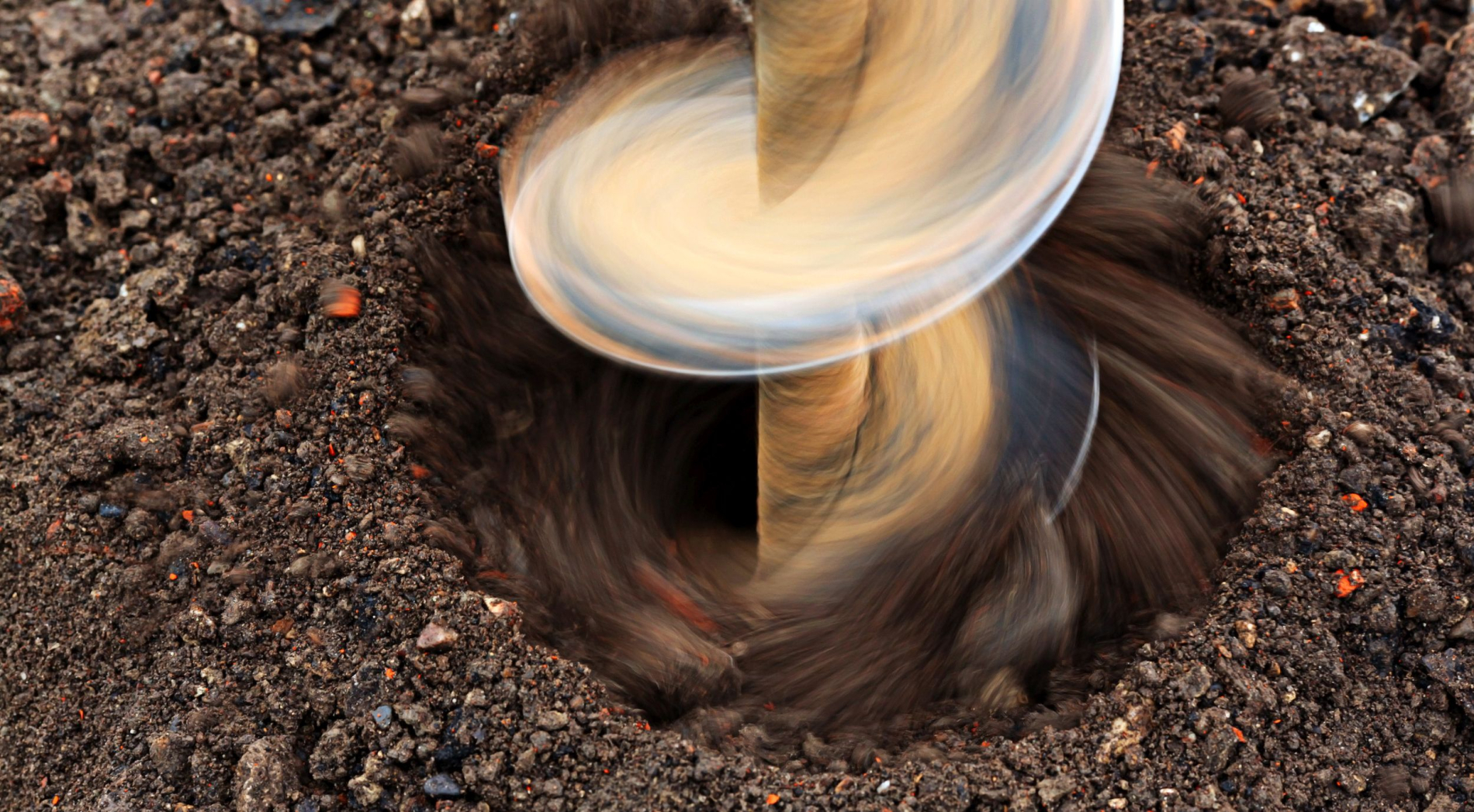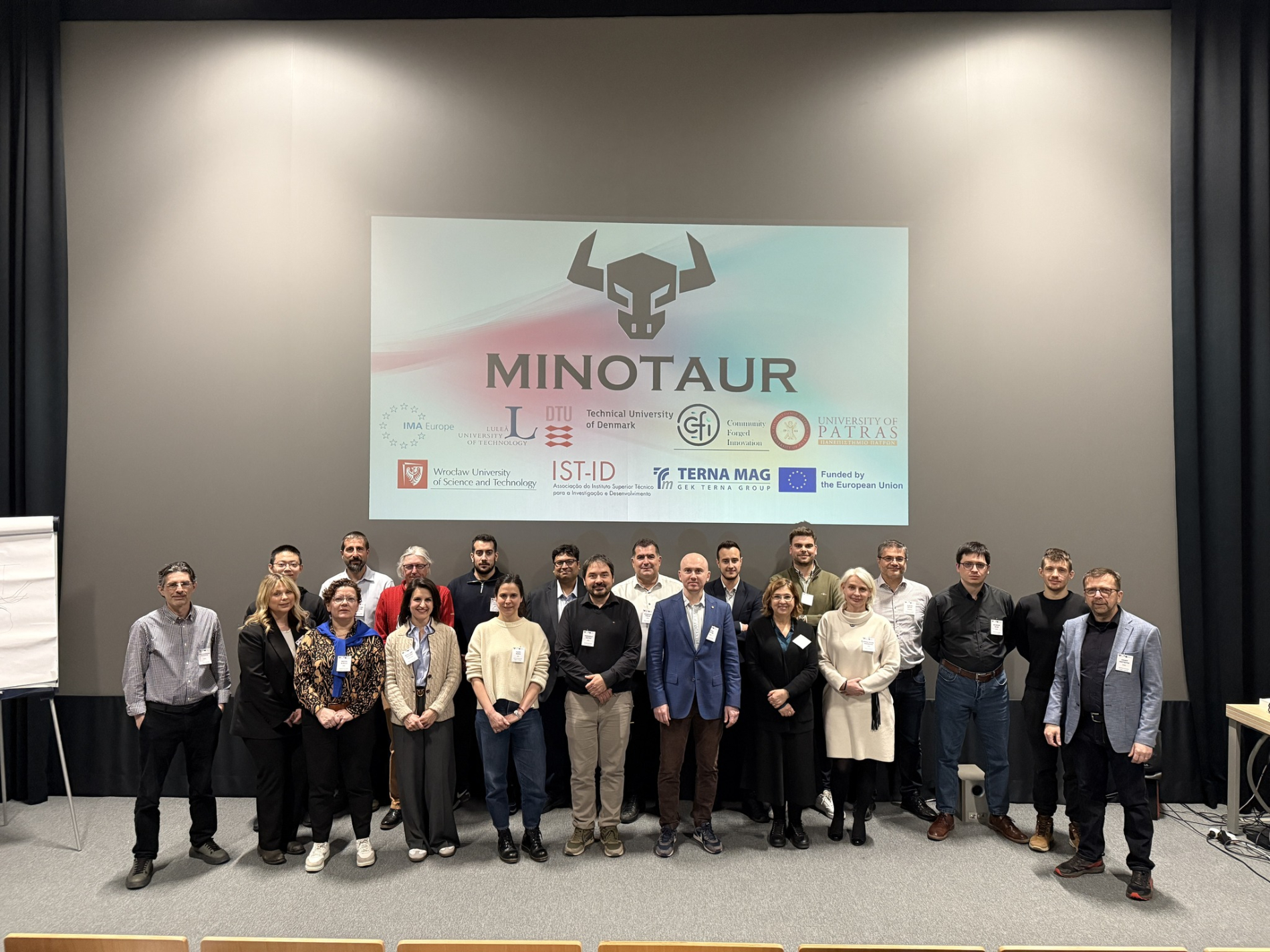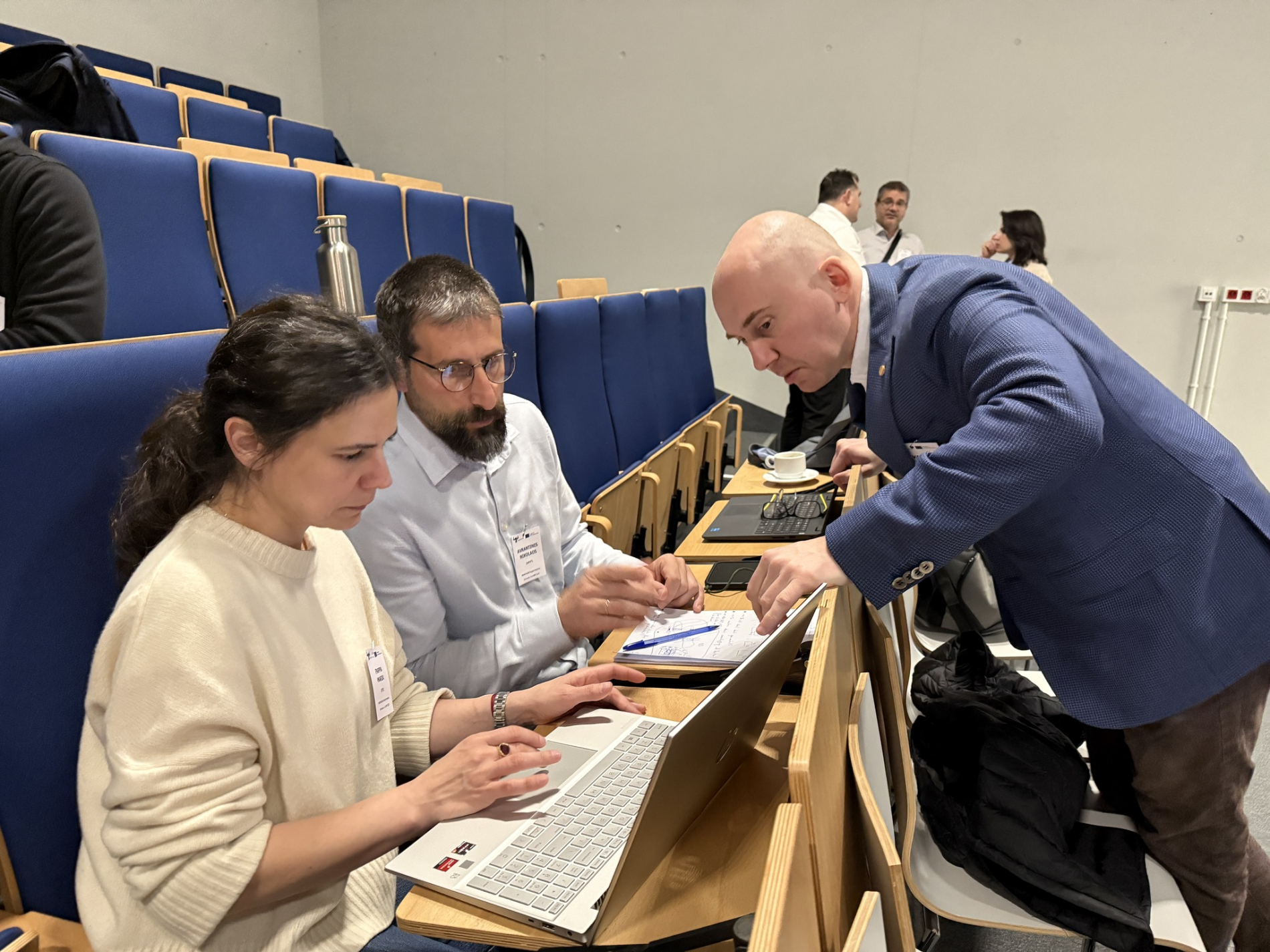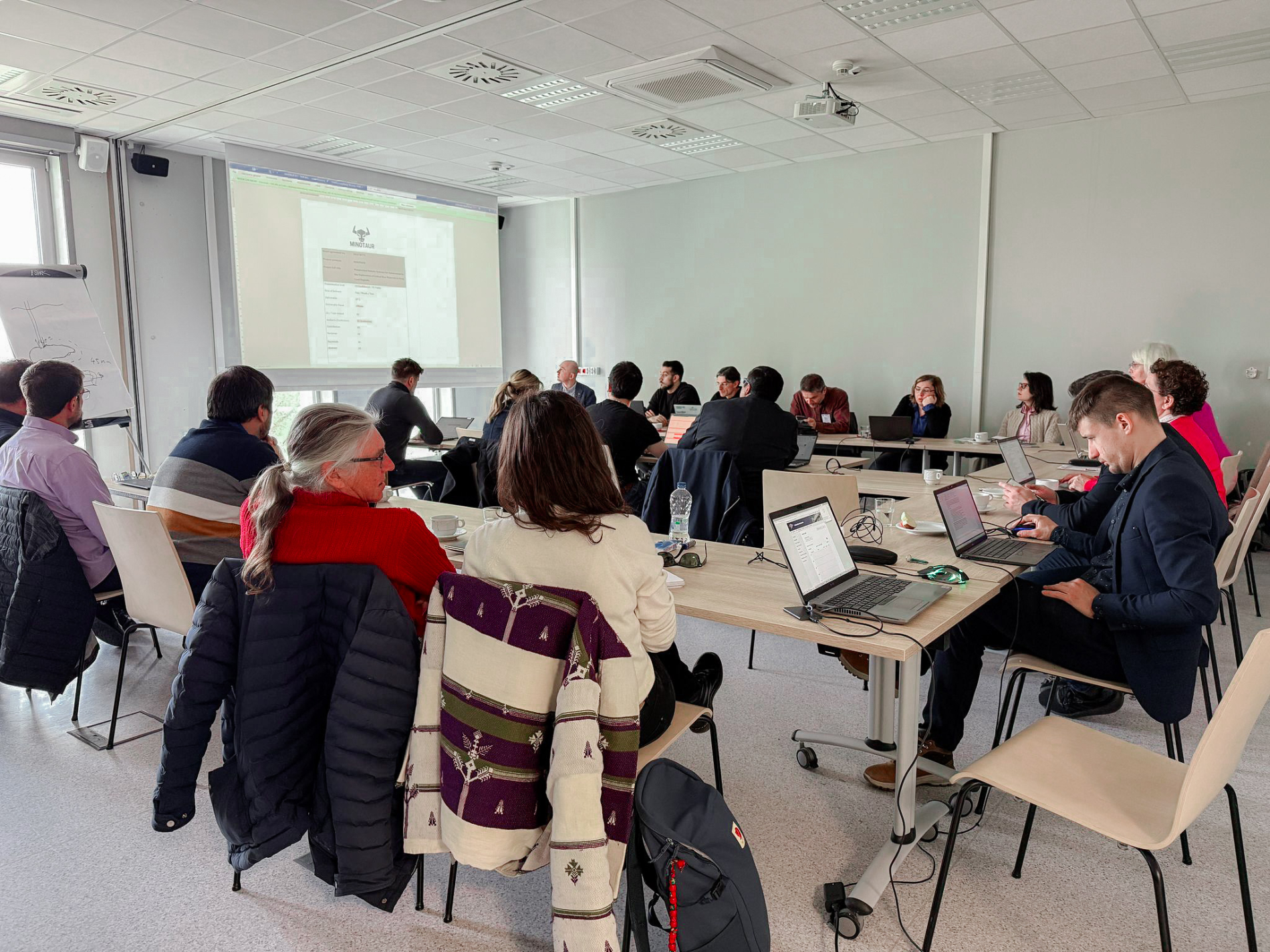YOUR BROWSER IS OUT-OF-DATE.
We have detected that you are using an outdated browser. Our service may not work properly for you. We recommend upgrading or switching to another browser.
Date: 03.04.2025 Category: international cooperation, science/research/innovation

Researchers from several European countries are developing a concept for an intelligent robot designed for exploratory drilling in the Horizon Europe project MINOTAUR - Miniaturized Robotic Systems for Autonomous In-Situ Exploration of Critical Raw Materials In Deep Land Deposits. The device aims to identify raw materials during drilling operations and follow the path toward the highest concentration of resources to optimize exploration. Simultaneously, it will transmit real-time information, allowing the creation of a "digital twin of the deposit." The Digital Mining Center team from the Faculty of Geoengineering, Mining, and Geology at Wrocław University of Science and Technology (PWr) is involved in the research.
This project is made possible through funding from the Horizon Europe program (specifically from Horizon Research and Innovation Actions within the topic HORIZON-CL4-2024-RESILIENCE-01-01). The MINOTAUR initiative involves research teams and experts from universities, scientific institutions, and mining companies across Sweden, Denmark, Poland, Portugal, Greece, and Belgium. The work began last November and is expected to continue for three years, led by a team from Luleå University of Technology.
 Searching for new mineral deposits involves deep vertical drilling to confirm if resource deposits justify extraction economically and in an environmentally friendly manner. Such drilling significantly impacts the environment—utilizing heavy drilling equipment, occupying large areas (up to thousands of square meters), and generating noise and pollution. Deep drilling also incurs high costs and needs sizable teams of experts.
Searching for new mineral deposits involves deep vertical drilling to confirm if resource deposits justify extraction economically and in an environmentally friendly manner. Such drilling significantly impacts the environment—utilizing heavy drilling equipment, occupying large areas (up to thousands of square meters), and generating noise and pollution. Deep drilling also incurs high costs and needs sizable teams of experts.
Consequently, researchers and industry representatives seek new solutions to reduce environmental impact and costs while accelerating and enhancing the efficiency of these new technologies. They are collaborating on the concept of an autonomous intelligent robot, equipped with advanced sensors and artificial intelligence algorithms, capable of simultaneously surveying the deposit and transmitting real-time data to the surface. Consortium members plan for the robot’s transmitted data to feed a "digital twin of the deposit"— a virtual representation system mapping resource distribution. This system will analyse mineral concentrations and guide the robot towards richer deposits. Such a solution could reduce drilling waste, environmental impact, and improve worker safety during drilling operations.
"Given the project's complexity, we assume our solution would not completely replace traditional exploratory drilling but would be an additional tool to speed up operations and reduce environmental costs," says Dr. Magdalena Worsa-Kozak from the Faculty of Geoengineering, Mining, and Geology, who is leading the project from PWR. "For example, the robot could be inserted into the initial borehole made by large drilling rigs, performing contour drilling to follow the boundary metal content within the deposit. The collected data would help determine deposit size and resource potential, ultimately reducing the number of necessary large-scale drillings."
 Currently, scientists avoid specifics as work is at an early stage, and even the technical outline requires extensive planning. However, the robot must be small, have drilling capability, potentially resembling miniature Tunnel Boring Machines (TBM), while also equipped with additional sensors, required for both navigation and geomodelling.
Currently, scientists avoid specifics as work is at an early stage, and even the technical outline requires extensive planning. However, the robot must be small, have drilling capability, potentially resembling miniature Tunnel Boring Machines (TBM), while also equipped with additional sensors, required for both navigation and geomodelling.
"We must remember we are working on a high-risk concept—an incredibly complex solution demanding in mechanical, technological, geological, geotechnical and legal aspects," emphasizes Dr. Worsa-Kozak. "The geological diversity of critical resource deposits globally is immense. Conditions for copper ore exploration differ significantly from those for gold vein deposits. Creating a universal robot capable of identifying every element and navigating every geological condition safely and effectively in real-time is impossible. Therefore, our project has selected two specific locations to develop this robot concept."
 Researchers will create a prototype capable of identifying specific raw materials and functioning under geological conditions similar to those found in magnesite mines in Greece and the wolframite mine in Portugal. This approach aims to pave the way for progressively advanced and more universally applicable technologies.
Researchers will create a prototype capable of identifying specific raw materials and functioning under geological conditions similar to those found in magnesite mines in Greece and the wolframite mine in Portugal. This approach aims to pave the way for progressively advanced and more universally applicable technologies.
The Wrocław University of Science and Technology team is:
- Coordinating one project package and
- Participating in other packages, to define the robot requirements and operational conditions.
- Analysing legal requirements (such as formal regulations for documenting deposits in various countries), ensuring the robot's use complies with necessary legal requirements, standards/procedures in place nationally or regionally in the countries where the MINOTAUR project partners operate.
On April 1-3, 2025, Wrocław University of Science and Technology hosted all project partners for a consortium meeting to discuss the project's progress and plans for the next months of implementation.
Further details about the MINOTAUR project are available on its website, with current updates published on LinkedIn.
*The full name of the project is Miniaturized Robotic Systems for Autonomous In-Situ Exploration of Critical Raw Materials in Deep Land Deposits. MINOTAUR Consortium members include Luleå University of Technology (leader), Technical University of Denmark, Wrocław University of Science and Technology, Associação Do Instituto Superior Técnico Para A Investigação E Desenvolvimento, University of Patras, Industrial Mineral Europe, Community Forged Innovation, and TERNA MAG S.A. This project has received funding from the European Union’s Horizon Europe Research and Innovation Programme under the Grant Agreement No. 101178775.

Our site uses cookies. By continuing to browse the site you agree to our use of cookies in accordance with current browser settings. You can change at any time.